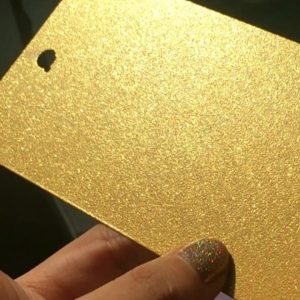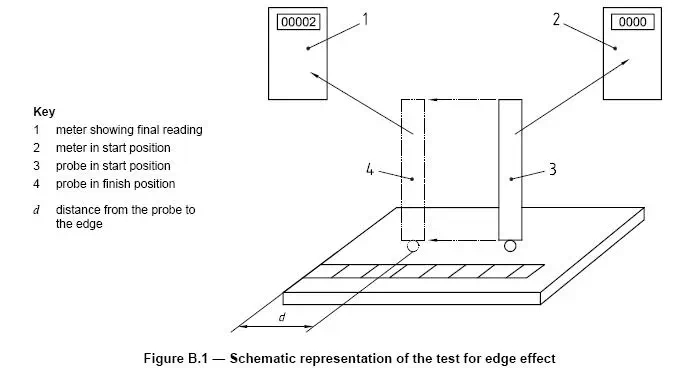Test for edge effect – ISO2360 2003

ISO2360 2003
A simple edge effect test, to assess the effect of the proximity of an edge, consists in using a clean uncoated sample of the basis metal as follows. The procedure is illustrated in Figure B.1.
Step 1
Place the probe on the sample, well away from the edge.
Step 2
Adjust the instrument to read zero.
Step 3
Progressively bring the probe towards the edge and note where a change of the instrument reading occurs with respect to the expected uncertainty or to the given thickness.
Step 4
Measure the distance, d, from the probe to the edge (see Figure B.1).
The instrument may be used without correction provided that the probe is further from the edge than the distance as measured above. If the probe is used closer to the edge, special calibration correction is required. If necessary, refer to the manufacturer’s instructions.
If the sample to be measured is not flat, then an uncoated sample should be used that is representative both in size and shape.

Test for edge effect – ISO2360 2003

Comments are Closed